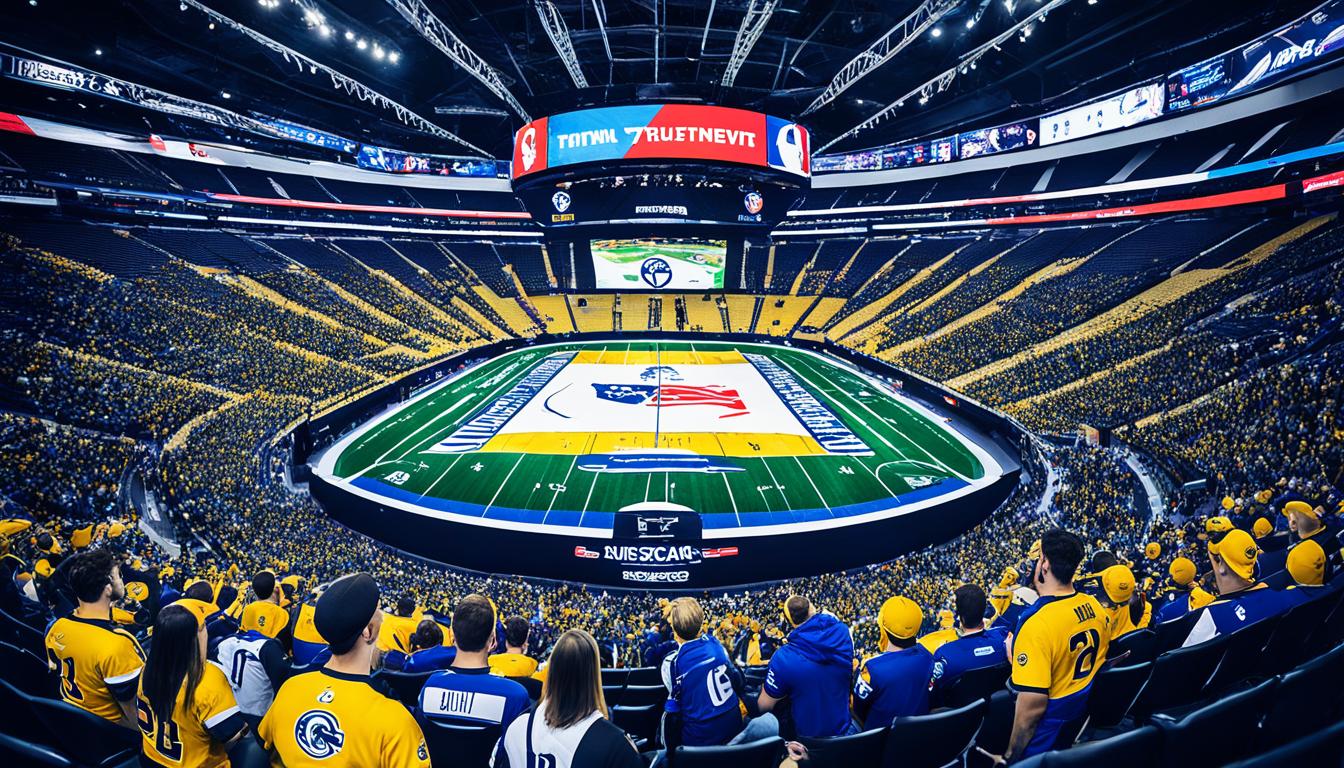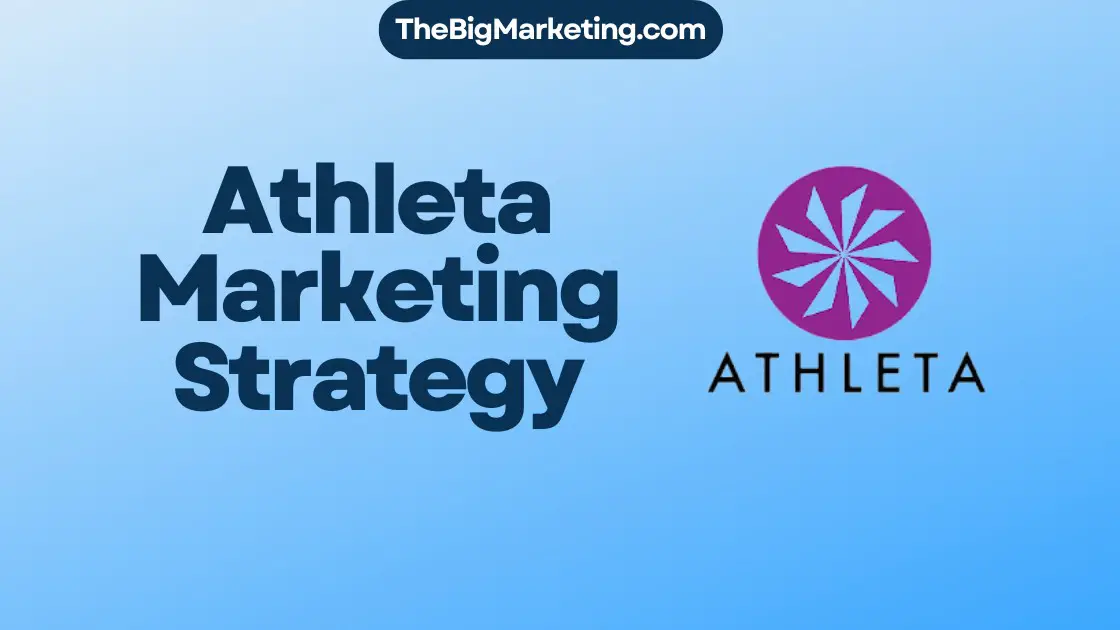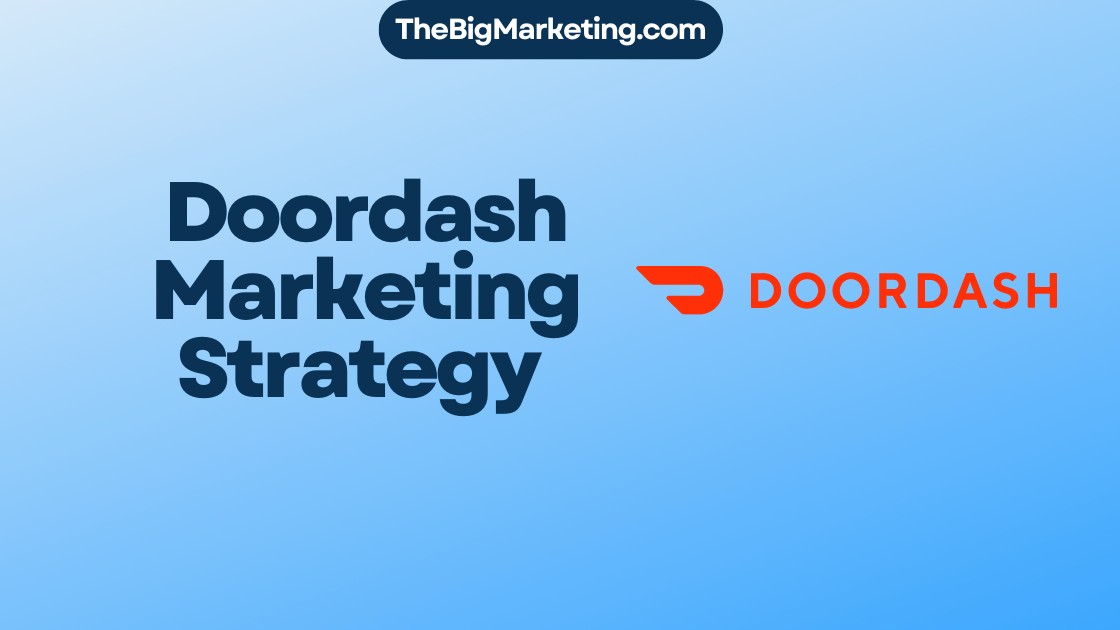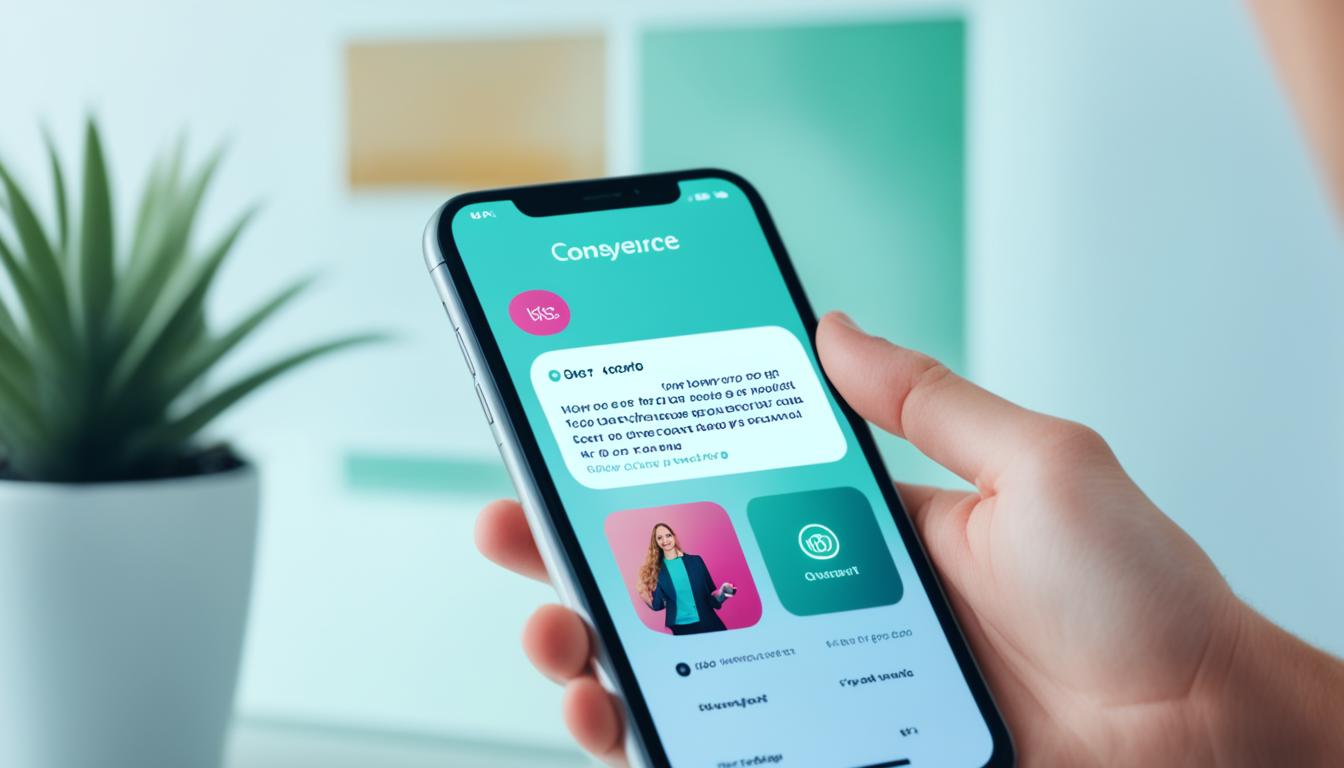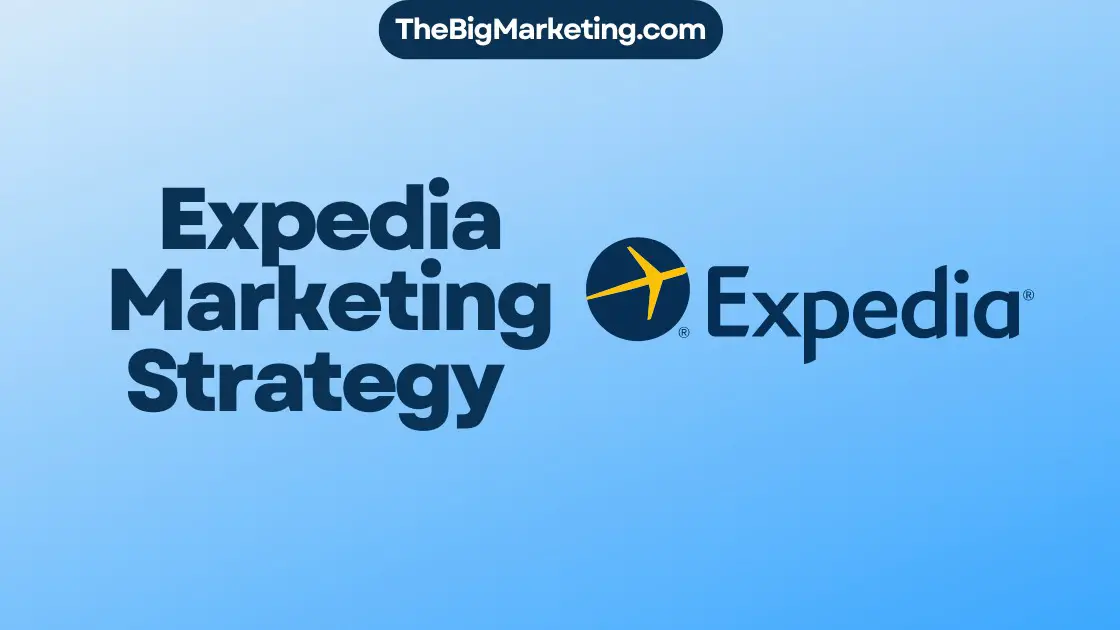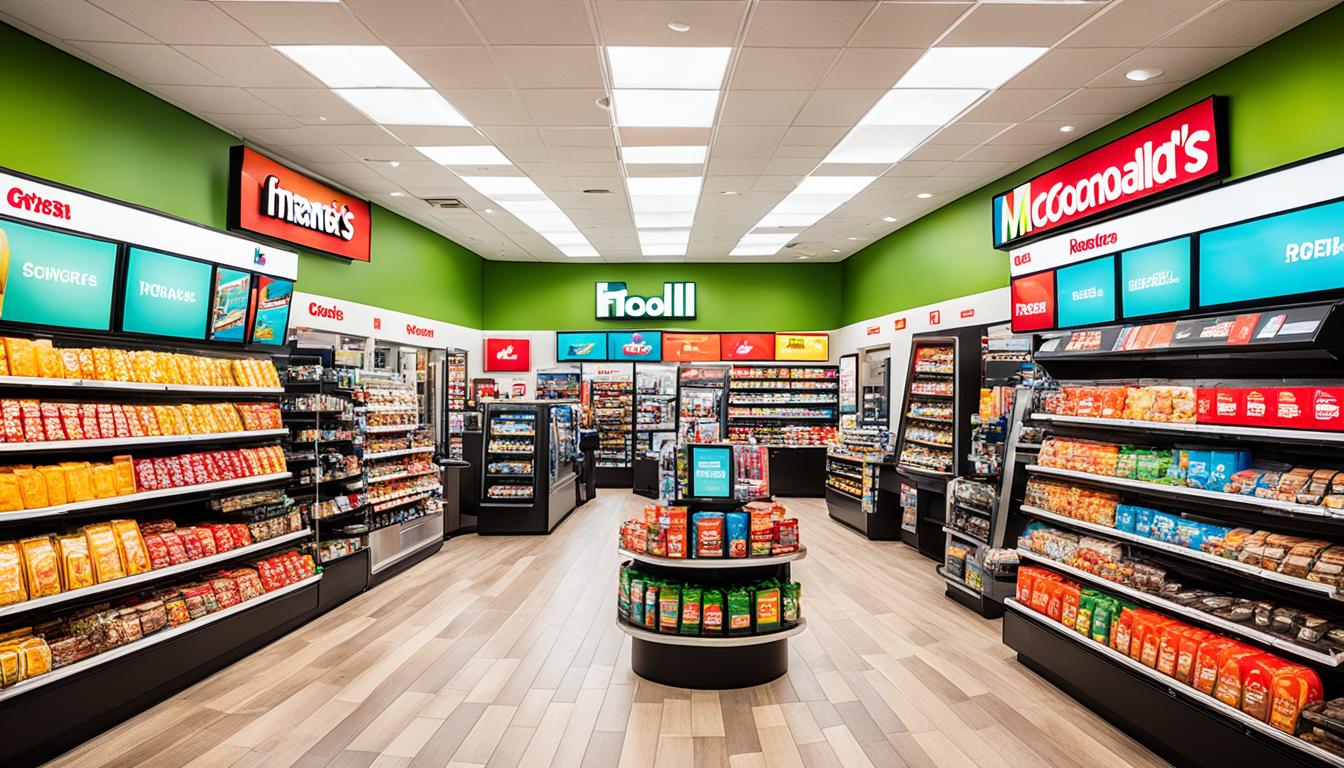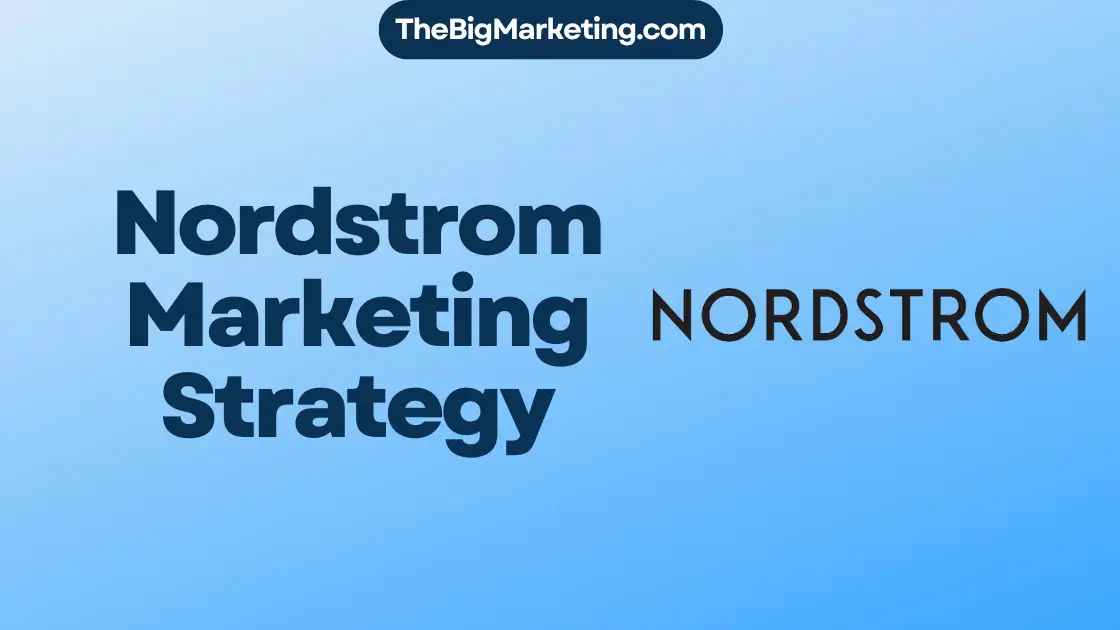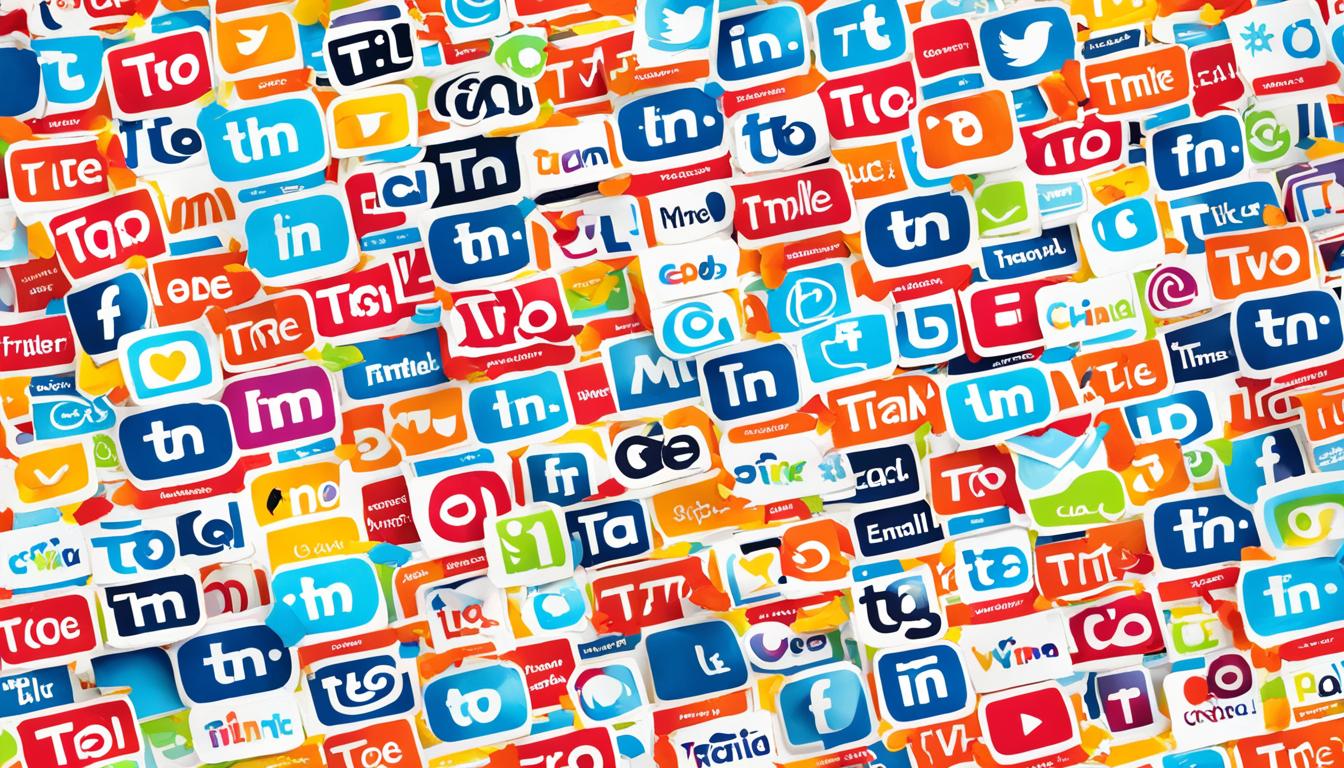In 2024, the global drinks industry is undergoing significant transformations, driven by evolving consumer preferences and emerging trends. One segment that is experiencing rapid growth is the energy drink market. With its focus on promoting caffeine beverages that provide an instant energy boost, this market offers immense opportunities for brands to boost their sales and enhance their market presence.
Effective marketing strategies play a pivotal role in capturing the attention of consumers and creating a strong brand presence. From energy drink advertising to branding and sales tactics, there are several key considerations for brands to keep in mind.
Key Takeaways:
- Understand the target demographic and leverage AI and social media analytics for insights.
- Create a unique brand image and identify the unique selling point.
- Utilize effective packaging to communicate the brand’s message and values.
- Engage consumers through educational and engaging content, influencer marketing, and a mix of traditional and digital media.
- Stay competitive in the energy drink market by studying competitors and identifying unique selling points.
The Rise of Functional Beverages and Sustainable Options
Functional beverages have emerged as a popular choice for consumers who seek more than just a thirst-quenching experience. These beverages claim to enhance wellness and offer additional benefits beyond hydration. A prime example is kombucha, which is packed with gut-friendly probiotics that support digestive health.
Another growing trend is the infusion of natural, plant-based ingredients in energy drinks. These beverages provide a boost of energy while leveraging the power of nature. Consumers are gravitating towards these functional beverages due to their perceived health benefits and the desire for a holistic approach to wellness.
Alongside the rise of functional beverages, consumers are placing increasing importance on sustainable options. Brands that embrace eco-friendly initiatives, such as sustainable packaging and reducing their carbon footprint, are gaining favor among conscious consumers. Minimal packaging and the use of recyclable materials are highly valued.
In summary, the rise of functional beverages and sustainable options demonstrates the evolving preferences of consumers. They are seeking beverages that not only meet their specific needs but also align with their values and contribute to a more sustainable future.
Targeting the Right Audience with AI and Social Media Analytics
Beverage marketing is highly dependent on understanding the target demographic and their values. To achieve this, traditional market research methods such as surveys and focus groups have been complemented by cutting-edge technologies like AI and social media analytics.
By leveraging social media analytics and sentiment analysis, companies can now gain valuable insights by listening in on consumer conversations about products, competitors, and industry trends. This real-time data provides a wealth of information that can help beverage marketers identify patterns, preferences, and emerging trends.
Coca-Cola, a leading brand in the industry, has successfully utilized AI to analyze social media data and customer feedback. This enabled them to identify a gap in the market for a cherry-flavored carbonated beverage and led to the successful launch of Cherry Sprite.
The integration of AI and social media analytics has revolutionized the way beverage marketers understand and target their audience. By deciphering consumer sentiment and preferences, companies can tailor their marketing strategies to resonate with the desires and aspirations of their target demographic.
Benefits of AI and Social Media Analytics in Beverage Marketing
- Real-time insights: Social media analytics allows beverage marketers to monitor consumer conversations in real-time, enabling them to stay ahead of trends and adapt their strategies accordingly.
- Improved targeting: By understanding the preferences and values of the target demographic, beverage marketers can create highly targeted campaigns that resonate with their audience.
- Identifying emerging trends: AI and social media analytics can help beverage marketers identify emerging trends and consumer demands, allowing them to stay innovative and ahead of the competition.
- Enhanced customer engagement: By analyzing social media data and sentiment, beverage marketers can engage with their customers on a deeper level, building brand loyalty and fostering long-term relationships.
Example of AI-driven Beverage Marketing Success
Coca-Cola’s use of AI and social media analytics demonstrates the power of these technologies in driving successful marketing campaigns. Through careful analysis of consumer data, Coca-Cola was able to identify the opportunity to launch a cherry-flavored carbonated beverage, which resonated with their target demographic and led to increased sales and brand engagement.
Creating a Unique Brand Image and Leveraging Unique Selling Points
When it comes to beverages, it is crucial for marketeers to establish a brand image, personality, and voice that sets them apart from the competition. By crafting a unique brand identity, companies can effectively capture the attention and loyalty of consumers. One notable example of successful brand image creation is Red Bull, which has cultivated an association with extreme sports and adventure. This distinctive positioning has propelled Red Bull to become a dominant player in the energy drink market.
In addition to brand image, marketeers should also identify and leverage the unique selling points (USPs) of their products. Whether it’s a specific flavor, health benefits, or an eco-friendly approach, highlighting the USPs can differentiate a brand from its competitors. By emphasizing what makes their products special, marketeers can effectively appeal to their target audience and carve out a niche in the highly competitive beverage market.
One critical aspect of establishing a brand image and communicating USPs is through effective packaging. Packaging serves as a visual representation of a brand’s message and values, making it an essential tool for brand positioning. Companies are now embracing innovations in packaging materials, such as biodegradable options and smart packaging, to align with sustainability trends and enhance their brand image.
In summary, creating a unique brand image and leveraging unique selling points are key strategies for successful beverage marketing. By differentiating themselves from the competition and highlighting what sets them apart, marketeers can resonate with their target audience and build brand loyalty. Effective packaging further reinforces the brand’s message and values, enhancing its overall appeal in the market.
Influencer Marketing and Engaging Content
Influencer marketing has emerged as a strategic route for many drinks brands in their marketing campaigns. By collaborating with influencers who have a strong online presence and a dedicated following, brands can effectively promote their products and reach their target audience. When partnering with influencers, it is crucial to set clear goals for brand awareness, engagement, and sales.
To measure the impact of influencer campaigns, brands can utilize tools like Google Analytics and unique promo codes. These tools allow them to track the success of their campaigns, identify areas for improvement, and make data-driven decisions for future marketing strategies.
Engaging and informative content plays a pivotal role in establishing a brand as a thought leader and a trusted source of information. This type of content not only captivates the audience but also educates them about the brand’s heritage, craft, and journey. By sharing quality content that resonates with their target audience, brands can enhance their visibility and appeal.
Educational content that demystifies the product or celebrates its uniqueness can greatly contribute to driving engagement. Consumers are more likely to connect with a brand that provides valuable information and insights, helping them make informed decisions about their beverage choices.
Blending Traditional and Digital Marketing
When it comes to effective beverage marketing, a blend of traditional and digital strategies is essential. Successful brands understand the value of combining traditional marketing methods with the power of digital platforms. By leveraging both traditional and digital channels, companies can reach a broader audience, boost engagement, and maximize the impact of their advertising campaigns.
Traditional marketing tactics, such as television commercials and event sponsorships, play a crucial role in raising brand awareness and establishing a presence in the market. These traditional methods have the advantage of reaching a wide audience, creating a memorable brand image, and fostering trust and credibility. For example, Coca-Cola’s #ShareACoke campaign, which involved personalized bottles, created a viral sensation and generated significant brand buzz.
However, in today’s digital age, it is equally important to have a strong online presence. Digital marketing offers unique opportunities for targeted advertising, precise audience segmentation, and real-time data analysis. Online display ads, influencer partnerships, blogging, videos, and infographics are effective digital strategies that can elevate visibility and appeal.
Creating engaging content that shares inspiring stories and highlights the brand’s values can resonate with consumers on a deeper level. By leveraging digital platforms, companies can connect with their target audience in a more personalized and interactive way. Through social media platforms, brands can develop relationships with their customers, respond to their feedback, and build brand loyalty.
Utilizing a Blend of Traditional and Digital Media
Blending traditional and digital media enables companies to maximize their marketing efforts and create a comprehensive brand experience. By combining traditional and digital channels, companies can create a cohesive and integrated marketing strategy that leverages the strengths of both approaches.
- Television commercials and event sponsorships can be complemented by online display ads and influencer partnerships, ensuring consistent messaging and increased brand exposure.
- Creating curated content that tells the brand’s story and highlights its unique selling points can be shared through blog posts, videos, and infographics, capturing the attention of digital-savvy consumers.
- Targeted online advertising campaigns can reach specific customer segments and drive engagement, while traditional methods raise brand awareness among a broader audience.
- Social media provides a platform for ongoing customer engagement, allowing brands to interact with their audience, address concerns, and build a community around their products.
By blending traditional and digital marketing, beverage brands can create a holistic marketing strategy that maximizes reach, engagement, and impact. This approach enables companies to stay relevant in a digital age while leveraging the strengths of traditional advertising. The future of beverage marketing lies in seamlessly integrating traditional and digital methods to connect with consumers and drive business growth.
The Competitive Nature of the Energy Drink Market
The energy drink market is highly competitive and fragmented, with several top competitors vying for market dominance. Brands like Monster Energy, Celsius, C4, and Ghost have emerged as leaders in the industry, experiencing strong sales and gaining significant market share. These brands have effectively positioned themselves in the market by offering unique products and appealing to a wide range of consumer preferences and needs.
On the other hand, some established players like Starbucks energy and Rockstar have faced challenges in maintaining their sales and market position. These brands have seen a decline in sales due to increasing competition and changing consumer preferences.
In this fiercely competitive energy drink market, understanding the competition and identifying unique selling points are crucial for success. Brands need to differentiate themselves from their competitors by offering innovative products, appealing packaging, and effective marketing strategies. By staying ahead of the curve and strategically positioning themselves in the market, energy drink brands can navigate the competitive landscape and thrive in this dynamic industry.
Future Focus and Innovations in Energy Drink Marketing
As the energy drink market continues to evolve, companies like Monster Energy are implementing future-focused strategies to drive growth and stay ahead of the competition. With a strong emphasis on innovation, social media marketing, and in-store execution, Monster Energy aims to boost sales and regain market share.
Innovation as a Key Driver of Growth
Innovation plays a crucial role in the success of energy drink brands. Monster Energy recognizes the importance of constantly introducing new flavors and product lines to cater to the evolving preferences of consumers. By offering a diverse range of options, they can tap into different consumer segments and attract a wider customer base.
One of the growth strategies Monster Energy plans to pursue is the launch of new flavors. This allows them to not only cater to consumers who prefer traditional full sugar products but also capture the growing market of individuals seeking healthier alternatives with reduced sugar content.
Focus on Social Media Marketing
Social media platforms have become an integral part of marketing strategies, enabling brands to reach and engage with their target audience effectively. Monster Energy plans to allocate more resources to social media marketing, leveraging platforms like Instagram, Facebook, and Twitter to connect with energy drink enthusiasts and create brand awareness.
Through engaging content, interactive campaigns, and collaborations with influencers, Monster Energy aims to strengthen its presence on social media, fostering a sense of community and establishing a loyal customer base. By staying up-to-date with the latest social media trends and leveraging user-generated content, they can effectively promote their brand and products to a wider audience.
Improved In-Store Execution for Enhanced Customer Experience
The energy drink market is highly competitive, and providing a seamless in-store experience is crucial for driving sales. Monster Energy recognizes the significance of effective in-store execution, ensuring that their products are prominently displayed, easily accessible, and accompanied by compelling promotional materials.
By working closely with retailers and implementing strategies to enhance the visibility of their products, Monster Energy aims to increase brand visibility and attract more customers. This includes eye-catching displays, point-of-sale promotions, and collaborations with retailers to create exclusive deals and offers.
Rebuilding the Consumer Base for Acquired Brand Bang
Monster Energy recently acquired the brand Bang, and they have plans to rebuild its consumer base. With a focus on targeted marketing campaigns and product positioning, Monster Energy aims to revitalize the brand and establish its presence in the energy drink market.
By leveraging their expertise in brand management and utilizing insights from consumer behavior analysis, Monster Energy seeks to attract new consumers to the Bang brand. Through strategic partnerships and engaging marketing tactics, they aim to position Bang as a top contender in the competitive energy drink market.
| Future Focus and Innovations in Energy Drink Marketing | Innovation | Social Media Marketing | In-Store Execution | Rebuilding the Consumer Base for Acquired Brand Bang |
|---|---|---|---|---|
| Key driver of growth | Launching new flavors and product lines | Allocating more resources to social media marketing | Enhancing in-store displays and promotions | Implementing targeted marketing campaigns and strategic partnerships |
| Catering to diverse consumer preferences | Engaging with energy drink enthusiasts on social platforms | Establishing brand visibility and attracting more customers | Revitalizing the Bang brand and positioning it in the market |
With a strong focus on innovation, social media marketing, and in-store execution, Monster Energy is well-positioned to drive future growth and success in the highly competitive energy drink market. By continuously adapting to consumer preferences and leveraging strategic marketing tactics, they aim to remain at the forefront of the industry.
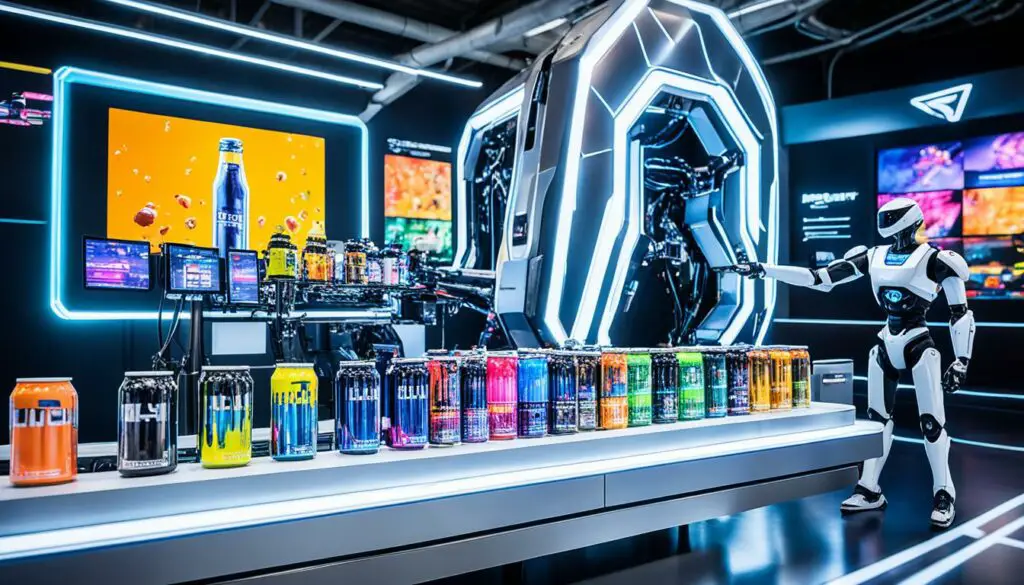
Conclusion
Effective marketing strategies for energy drinks in 2024 are vital to stand out in the competitive market. Brands need to target the right audience by understanding their preferences and values. Creating a unique brand image is crucial to differentiate from competitors, while leveraging unique selling points will attract consumers. Utilizing influencer marketing and engaging content can help build brand awareness and drive sales.
Blending traditional and digital marketing tactics is essential in reaching a broader audience. Integrating television commercials, event sponsorships, online display ads, and influencer partnerships can maximize visibility and engagement. Sustainability and innovation should be at the forefront of marketing efforts to resonate with conscious consumers.
In conclusion, with the right strategies, energy drink brands can regain market share and boost sales. By targeting the right audience, creating a unique brand image, leveraging unique selling points, and utilizing influencer marketing and engaging content, brands can position themselves for success in the competitive energy drink market of 2024.
FAQ
What are some effective marketing strategies for energy drinks?
Effective marketing strategies for energy drinks include targeting the right audience, creating a unique brand image, leveraging unique selling points, utilizing influencer marketing and engaging content, and blending traditional and digital marketing tactics.
What are functional beverages and why are they gaining popularity?
Functional beverages are drinks that offer more than just being thirst-quenching and claim to enhance wellness. Examples include kombucha with gut-friendly probiotics and energy drinks infused with natural, plant-based ingredients. They are gaining popularity because consumers are increasingly looking for drinks that offer health benefits.
How important are sustainable packaging and eco-friendly initiatives in the drinks industry?
Sustainable packaging and eco-friendly initiatives are important to consumers in the drinks industry. Brands that champion eco-friendly initiatives, such as minimal packaging and recyclable materials, are favored by consumers who want to support environmentally conscious brands.
How can AI and social media analytics help with targeting the right audience?
AI and social media analytics can help with targeting the right audience by analyzing data and identifying patterns and preferences. By listening in on consumer conversations about products, competitors, and the industry, companies can gain valuable insights into the target demographic’s values and preferences.
How can brands create a unique brand image and leverage unique selling points?
Brands can create a unique brand image by crafting a distinct personality and voice that differentiates them from the competition. They can leverage unique selling points by identifying what sets their brand apart, whether it’s through flavor, health benefits, or an eco-friendly approach.
What is influencer marketing and why is it effective?
Influencer marketing is a strategic route for many drinks brands. It involves partnering with influencers who have a strong following and influence over their audience. Influencer marketing is effective because it can help increase brand awareness, engagement, and sales.
How can blending traditional and digital marketing tactics be beneficial for beverage marketing?
Blending traditional and digital marketing tactics can be beneficial for beverage marketing as it helps reach a broader audience and boosts engagement. Successful brands use a mix of traditional advertising methods like television commercials and event sponsorships, along with online display ads and influencer partnerships.
How competitive is the energy drink market?
The energy drink market is highly competitive and fragmented. Brands like Monster Energy, Celsius, C4, and Ghost are leading the way with strong sales and gains in market share. Understanding the competition and identifying unique selling points are crucial in this competitive market.
What are some future focus and innovations in energy drink marketing?
Future focus and innovations in energy drink marketing include social media marketing, in-store execution, and product innovation. Brands like Monster Energy plan to allocate more resources to social media marketing, improve in-store execution, and launch new flavors to cater to different consumer preferences.
